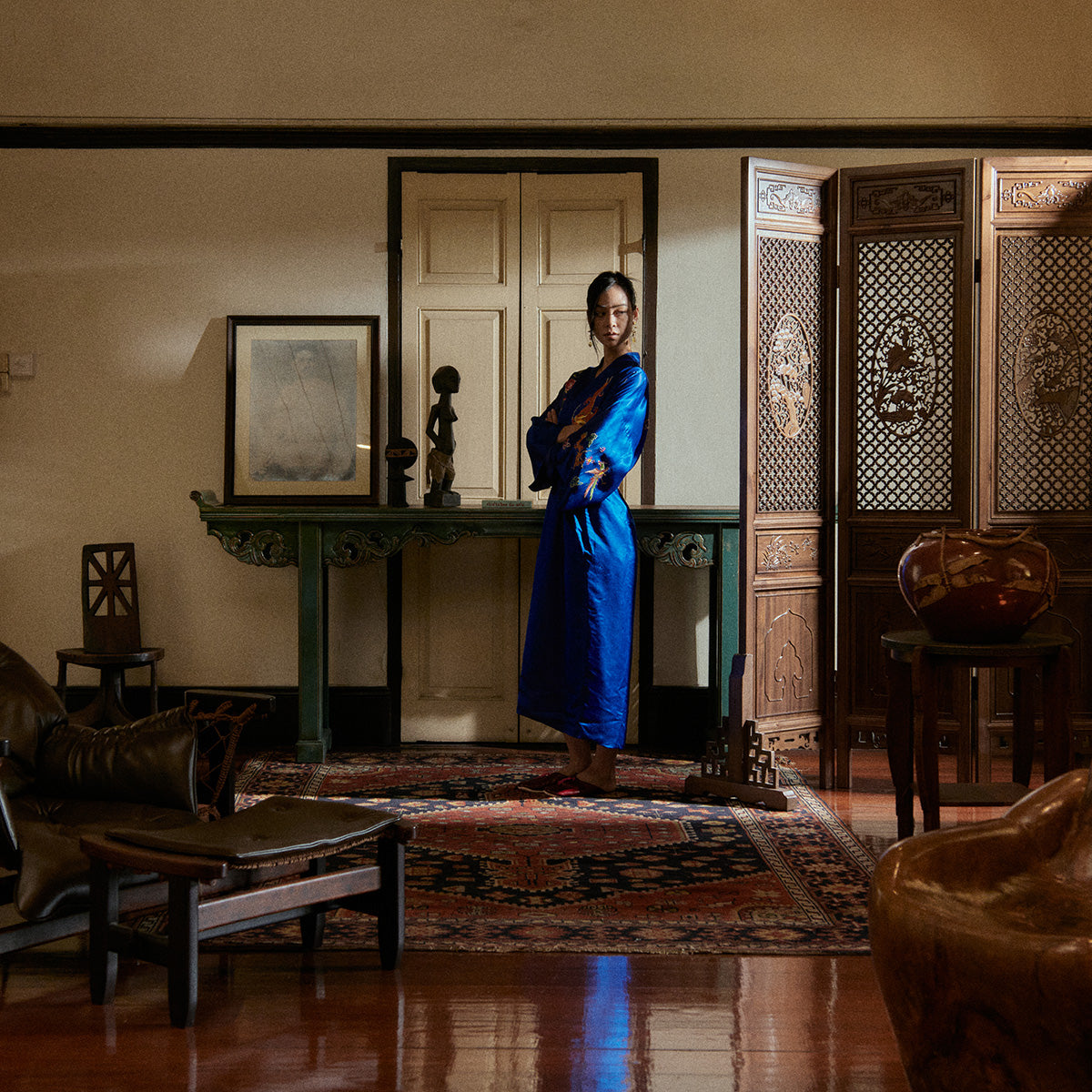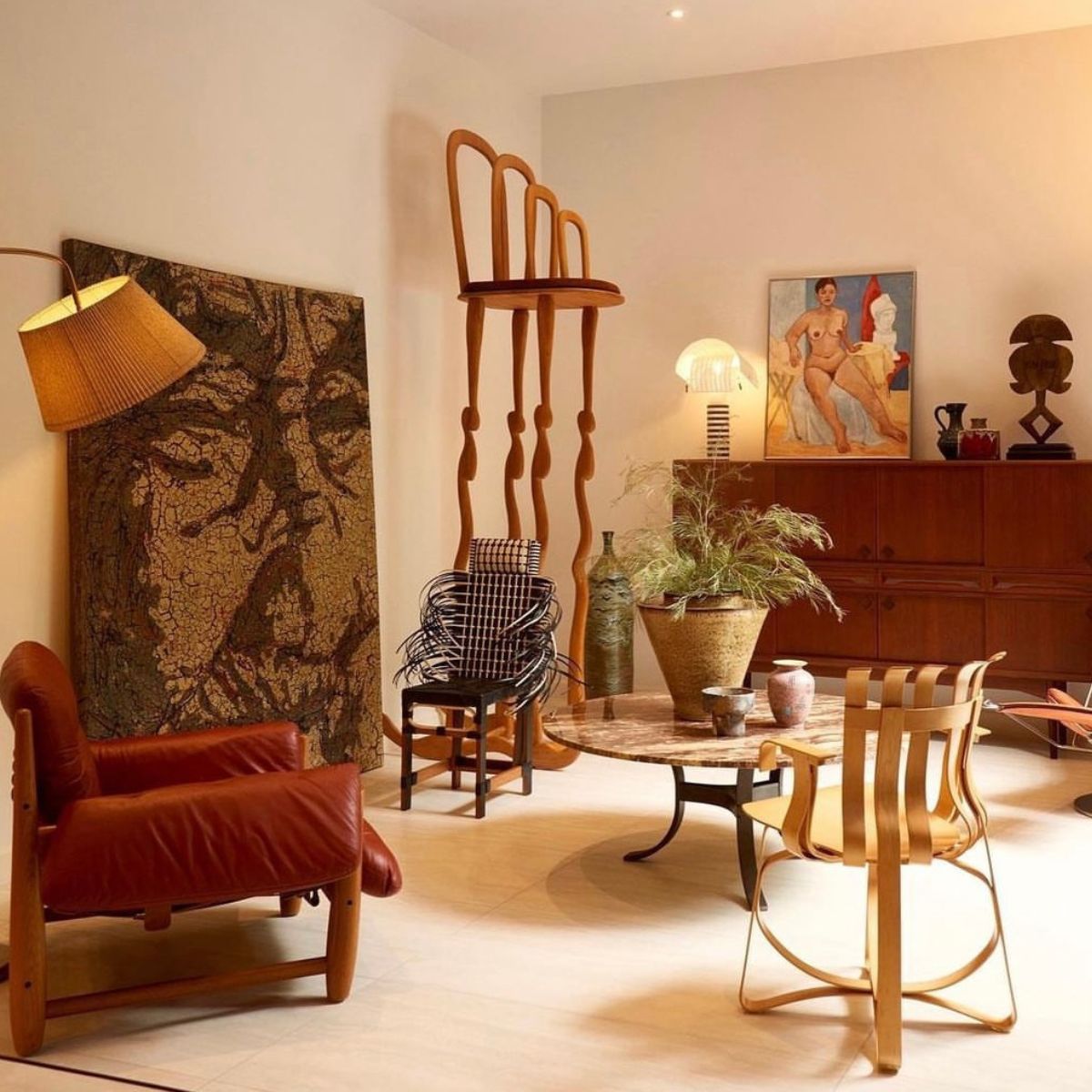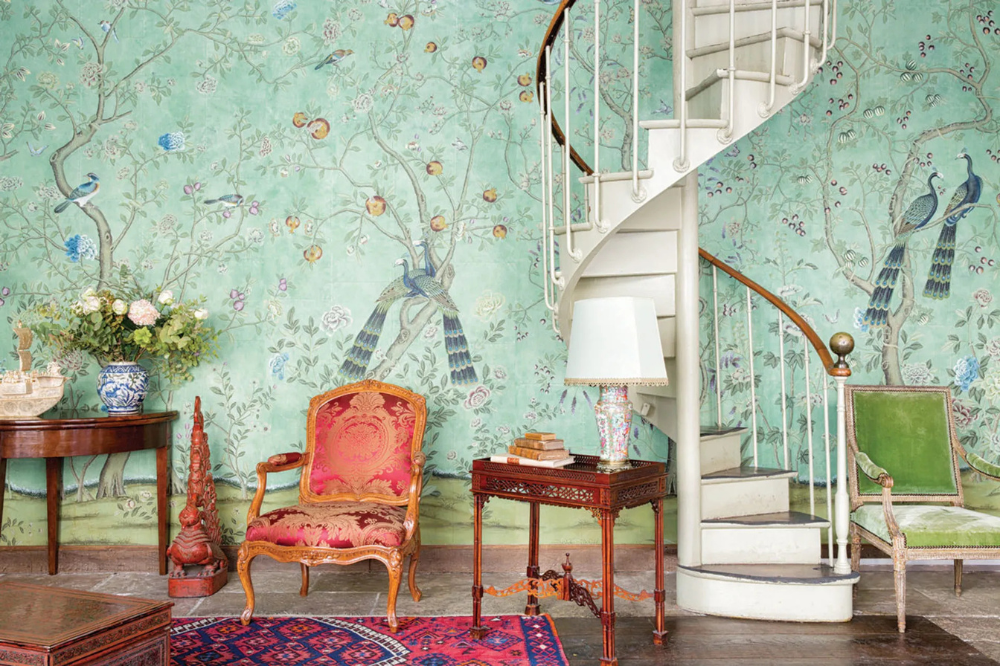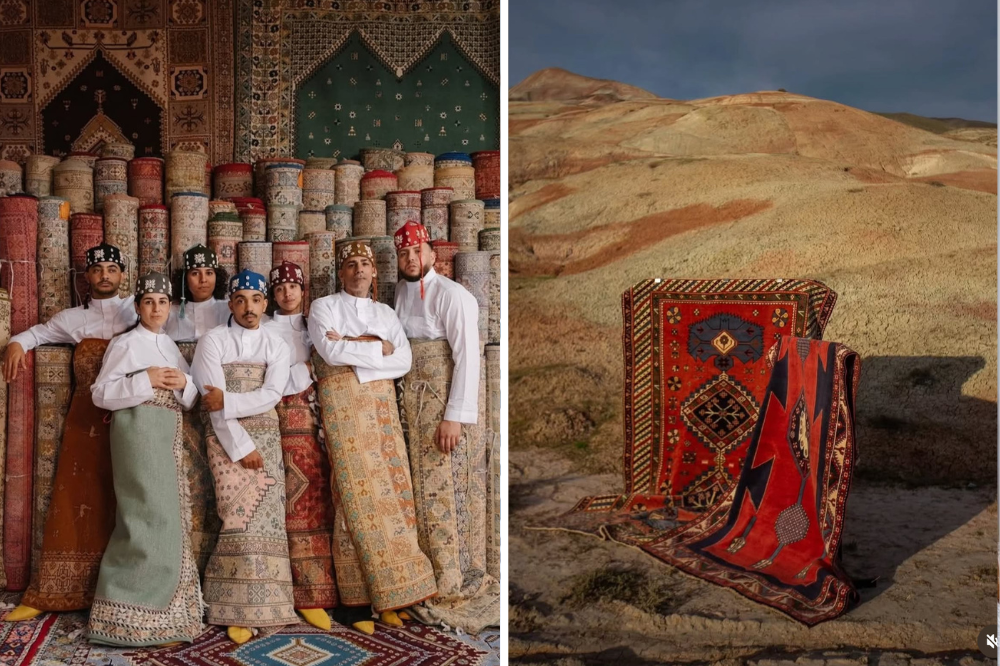As seen in Lifestyle Asia Kuala Lumpur (Featured photo: Mariam Medvedeva/ De Gournay)
The word chinoiserie may be derived from the French word chinois, which means “Chinese”, but it’s a far cry from Oriental or Chinese style.
Chinoserie didn’t come directly from any parts of Asia either. It’s actually a European interpretation of East Asian design influenced during the golden days of cross-continent trades in the 17th and 18th centuries. At that time, only a handful of Europeans travelled to Asia and developed a great respect for Asian art and culture.

Above Left: Set of 6 Venetian Lacquered Pearl & Salmon Velvet Dining Chairs
Above Right: Oriental Wood Carved Panel Decoration
Despite very limited knowledge on the subject matter so unfamiliar to them, they were intrigued by exotic Asian cultures and began reinterpreting their versions of ‘East Asian designs’. These new designs were very much rooted in the highly ornamental rococo style that was highly favoured by members of the royal family. Very soon, Chinoiserie became relevant as it graced the chambers and boudoirs in palaces of King Louis XV and King George IV.
It was also during this time that tea became one of Europe’s biggest imports. As tea appreciation grew in popularity, the need for elaborate mise-en-scène complete with tea sets, silverware, matching tables and chairs, tea chests and more, bolstered the demand for all things chinoiserie.
While some may call it an accidental style, Chinoiserie observes more than just beautiful pieces of art. It was never a mismatch of cultures but a harmonious balance of east meets west — similar to Peranakan and Indochine style. As an evergreen style in interior design since the 17th century, Chinoiserie spans the full range of decorative arts encapsulating wallpapers, textiles, intricate furniture, fine china, paintings and landscape artistry.

Left : Pagoda is one of the key leitmotifs in chinoiserie design. (Photo: Kate Walker Design)
Right : Bamboo-style design is another major component in chinoiserie. (Photo: Pinterest)
Every home should have a piece of Chinoiserie or two to spruce up the interiors. When put together nicely, a Chinoiserie piece adds character, exuberance and a touch of whimsy to a space. While the common colours in Chinoiserie range between rich yellows, aquamarine and greens to off-beat lacquered colours like deep red, orange and teal, elements of this style are created to stand out as a statement piece in a room — so it’s all about the mix.

Above Left: Rococo Style Porcelain Centrepiece with Gilded Scrollwork
Above Right: A pair of foo dogs (some regard them as lions)
Here’s a guide to understanding Chinoiserie and how you can inject this time-honoured style at home.
Motifs
You can tell the difference between Chinoiserie and other Asian-inspired styles by these key motifs including pagodas, dragons, foo dogs and nature sceneries. A pair of foo dogs (some regard them as lions) that are usually placed outside palaces and temples represent the harmony of yin and yang. These are usually used as decor on TV consoles or as life-size statues at your foyer.
A pair of foo dogs can also bring luck and balance to the home. (Photo: Enchanted Home)
Pagodas and dragons can be easily spotted on paintings, porcelains, wall coverings, silkscreens and even fabrics. Lighthearted scenery depicting mountains, gardens and landscapes are also popular but often very costly. You’ll find these exotic birds and sprawling floral leitmotifs in lush garden settings extremely luxurious on wallpapers; mostly hand-painted and some embroidered in gold threads.
 Timeless elegance in a vibrant space can be achieved with chinoiserie furnishings.
Timeless elegance in a vibrant space can be achieved with chinoiserie furnishings.
(Photo: One Kings Lane)
Furnishings
When it comes to textiles and wall coverings, you don’t need to go all maximalist with Chinoiserie style. A good touch of Chinoiserie can exude a glorious timelessness without feeling choked or too extravagant. Chinoiserie motifs have a natural luxury and elegance thanks to their Rococo roots.
These wallpapers, fabrics and embroidery patterns can easily blend themselves into contemporary spaces, classical interiors or even a speakeasy room — making Chinoiserie furnishings the answer to quick home makeovers.
Furniture
If you’re a collector of sorts, antique Chinoiserie furniture can be really hard to find. But there are many new reproductions that you can peruse a special piece with us at Surround Living. Everything found in typical classical French furniture repertoire has its Chinoiserie version. For sourcing enquiries please contact: Concierge@surroundliving.com

Left : French Louis XV Style Settee with Carved Walnut Frame
Right : A group of chinoiserie porcelain on a side chest makes an interesting visual statement in any corner of the room. (Photo: Mark D Sikes)
Chinoiserie furniture is usually lacquered and generally comes in black, red, yellow and wood tones. These furniture pieces have a signature shine, an extremely glossy finish that’s embellished with hand-painted motifs, intricate carvings and inlaid details in gold or mother of pearl.
Bamboo is also another prevalent component in Chinoiserie furniture. The beauty of lightweight skeletal furniture takes inspiration from the quintessential Ming chairs that are reinterpreted in various modern ways in current times.
Folding Screens
Another popular fixture in Chinoiserie design is the folding screen. These screens are typically ornate and add visual interest with their fair share of pattern play, colour, curvy lines and classic leitmotifs. They act as a great way to demarcate spaces and can be moved around to give your space a quick update every now and then.

Make chinoiserie vessels the centrepiece on dining tables, side consoles and bedroom drawers. (Photo: Frontgate)
Ceramics
The Europeans drew inspiration from the traditional blue and white Ming porcelain for pieces like vases, lamp stands, tea sets and more. Just like the Dutch delftware, the ‘direct imitation’ soon secured itself as a quintessential part of Chinoiserie style. Decorating your home with Chinoiserie vessels is purely for aesthetic purposes. You either have one large piece as the main decor or have them in large clusters — arrange everything on the dining table for maximum impact.
Shop Surround Living Chinoiserie Collection




